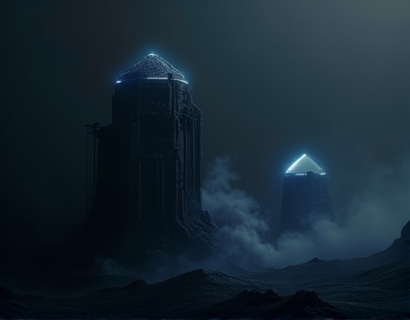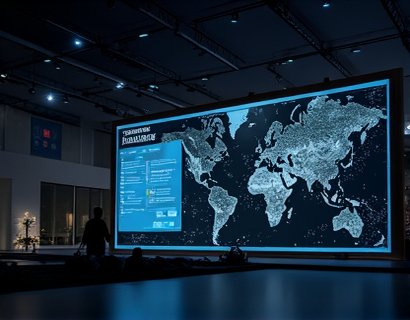Streamline Web Development: The Ultimate Tool for Generating Custom Placeholder Website Code
In the fast-paced world of web development, efficiency and productivity are paramount. For developers, designers, and business owners, creating a professional and visually appealing website is crucial for establishing a strong online presence. One of the key challenges in this process is generating placeholder content that mimics the final product without the need for actual content creation. This is where the importance of a robust tool for generating custom placeholder website code becomes evident. Such a tool not only saves time but also enhances the overall efficiency of the web development process.
The need for placeholder content is multifaceted. It allows developers to test the layout, design, and functionality of a website before the actual content is ready. For designers, it provides a realistic preview of how the design will look with content filled in. For business owners and digital agencies, it enables them to present a professional mock-up to clients, facilitating better communication and quicker decision-making. In this comprehensive guide, we will explore the benefits of using a specialized tool for generating custom placeholder website code, tailored to meet the needs of various stakeholders in the web development ecosystem.
Understanding Placeholder Website Code
Placeholder website code refers to the static content used to simulate the appearance of a live website. This code includes dummy text, images, and other elements that replicate the final content. The primary purpose is to provide a realistic representation of the website's structure and design. By using placeholder code, developers can focus on the technical aspects of web development, such as coding, styling, and functionality, without being bogged down by the content creation process.
The code for placeholder content is typically generated using predefined templates and placeholders for text and images. These templates can be customized to match the desired design and layout of the website. The use of consistent placeholders ensures that the mock-up looks cohesive and professional, making it easier to visualize the end product.
Benefits of Using a Custom Placeholder Code Generator
Utilizing a tool to generate custom placeholder website code offers numerous advantages. First and foremost, it significantly reduces the time required to set up a development environment. Instead of manually creating dummy content, developers can quickly generate placeholder pages that look authentic. This time savings translates directly into increased productivity and the ability to take on more projects.
Another significant benefit is the consistency it brings to the development process. With a reliable tool, the placeholder content remains uniform across different pages and sections of the website. This consistency is crucial for maintaining a professional look and feel, which is essential for client presentations and internal reviews.
Moreover, a custom placeholder code generator can handle various aspects of content simulation, including text length, image sizes, and even pseudo-interactive elements like buttons and forms. This level of customization ensures that the mock-up accurately reflects the final product, allowing for more accurate feedback and adjustments.
Customization Options
One of the key features of a robust placeholder code generator is its customization capabilities. Users can tailor the generated content to match their specific needs. For instance, the tool can produce text of varying lengths, from a few sentences to paragraphs, to simulate different content densities. This flexibility is particularly useful for testing how the website will look with different amounts of content.
Additionally, the tool can generate placeholder images with custom dimensions and styles, allowing designers to test how different visual elements will integrate into the design. Some advanced tools even offer the option to include links and hover effects, further enhancing the realism of the mock-up.
Enhancing Efficiency in Web Development
Efficiency is a critical factor in web development, and a placeholder code generator plays a pivotal role in achieving this. By automating the creation of placeholder content, developers can focus on the core aspects of their work. This automation reduces the repetitive tasks associated with content creation, allowing teams to allocate their time and resources more effectively.
For digital agencies and tech startups, the ability to quickly generate and iterate on placeholder designs is invaluable. It accelerates the prototyping phase, enabling faster turnaround times and more frequent client feedback cycles. This iterative process is essential for refining the design and functionality of a website, ensuring that the final product meets the client's expectations.
Moreover, the use of placeholder code can streamline collaboration within development teams. With a standardized approach to content simulation, team members can work more cohesively, reducing misunderstandings and miscommunications. This streamlined workflow leads to higher productivity and better project outcomes.
Tools for Different User Types
The benefits of a placeholder code generator extend to various user types, each with their unique requirements. For web developers, the tool provides a quick way to set up a development environment with realistic content. This allows them to test coding techniques, debug issues, and ensure cross-browser compatibility without the distraction of real content.
Designers can leverage the tool to create visually appealing mock-ups that closely resemble the final product. The ability to customize image sizes and styles ensures that the design elements are accurately represented. This level of detail is crucial for gathering precise feedback from clients and stakeholders.
Business owners and entrepreneurs, particularly those in e-commerce, can use the tool to present a professional website mock-up to investors or partners. A well-designed mock-up can make a compelling case for the project's potential, helping to secure funding or support.
Implementing Placeholder Code in Different Stages of Development
The utility of placeholder code is not limited to the initial design phase. It can be used throughout various stages of web development, from planning to launch and beyond. During the planning stage, placeholder code helps in visualizing the site's structure and layout, making it easier to make informed decisions about the design and functionality.
In the development phase, placeholder code serves as a temporary content solution, allowing developers to focus on coding and styling. As the project progresses, the placeholder content can be gradually replaced with real content, ensuring a smooth transition. This approach minimizes disruptions and maintains the integrity of the development process.
Post-launch, placeholder code can still be useful for creating staging environments for testing and quality assurance. Developers can use it to simulate different user scenarios and identify potential issues before they affect live users. This proactive approach to testing enhances the overall quality and reliability of the website.
Best Practices for Using Placeholder Code
To maximize the benefits of placeholder code, it's essential to follow best practices. First, ensure that the placeholder content is consistent across all pages. This consistency helps maintain a professional look and feel, which is crucial for client presentations and internal reviews.
Second, use placeholder text that is readable and distinguishable from actual text. This distinction prevents confusion and ensures that the focus remains on the design and layout. For example, using a distinct font or color for placeholder text can achieve this.
Third, incorporate interactive elements where possible. Adding hover effects or clickable buttons can make the mock-up more realistic and provide a better sense of the user experience. However, be mindful of the complexity to avoid overwhelming the development environment.
Finally, document the placeholder content and its intended use. This documentation helps team members understand the purpose of the placeholder code and ensures that everyone is on the same page regarding the development process.
Conclusion
In conclusion, a tool for generating custom placeholder website code is an invaluable asset in the web development process. It streamlines the creation of mock-ups, enhances efficiency, and ensures a professional presentation. Whether you are a developer, designer, or business owner, integrating such a tool into your workflow can significantly improve your productivity and project outcomes. By leveraging the power of placeholder code, you can focus on what truly matters—creating exceptional web experiences for your users.











































